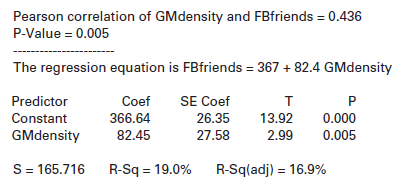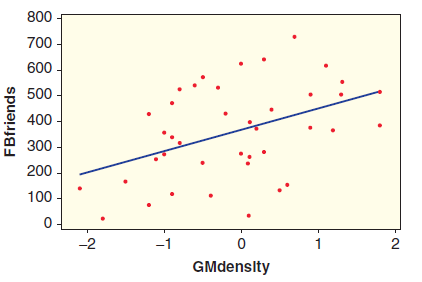In Exercise 9.19, we give computer output for a regression line to predict the number of Facebook
Question:
(a) What is the slope in this regression analysis? What is the standard error for the slope?
(b) Use the information from part (a) to calculate the test statistic to test the slope to determine whether GMdensity is an effective predictor of FBfriends. Give the hypotheses for the test, find the p-value, and make a conclusion. Show your work. Verify the values of the test statistic and the p-value using the computer output in Exercise 9.19.
(c) Use the information from part (a) to find and interpret a 95% confidence interval for the slope.
Exercise 9.19
A recent study in Great Britain examines the relationship between the number of friends an individual has on Facebook and grey matter density in the areas of the brain associated with social perception and associative memory. The data are available in the dataset FacebookFriends and the relevant variables are GMdensity (normalized z-scores of grey matter density in the relevant regions) and FBfriends (the number of friends on Facebook). The study included 40 students at City University London. A scatterplot of the data is shown in Figure 9.9 and computer output for both correlation and regression is shown below.

Figure 9.9

Step by Step Answer:

Statistics Unlocking The Power Of Data
ISBN: 9780470601877
1st Edition
Authors: Robin H. Lock, Patti Frazer Lock, Kari Lock Morgan, Eric F. Lock, Dennis F. Lock





